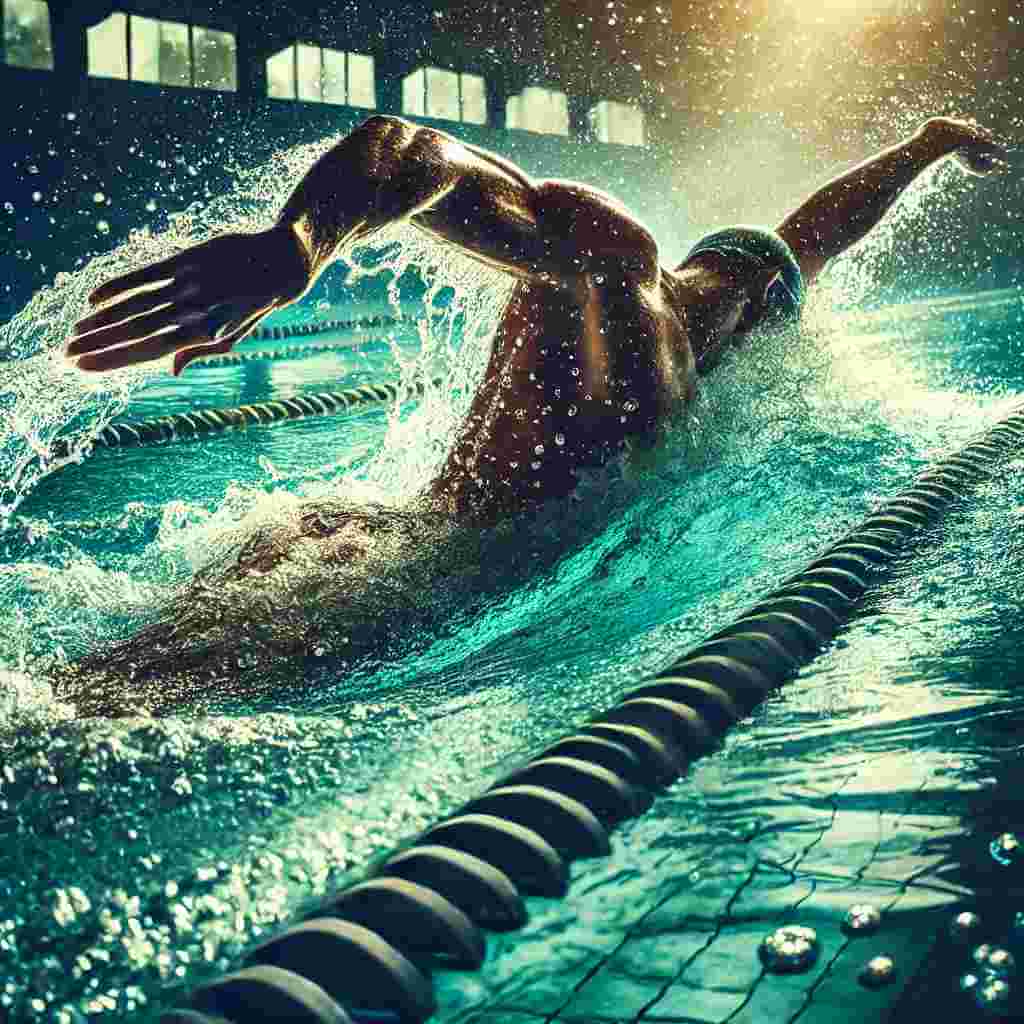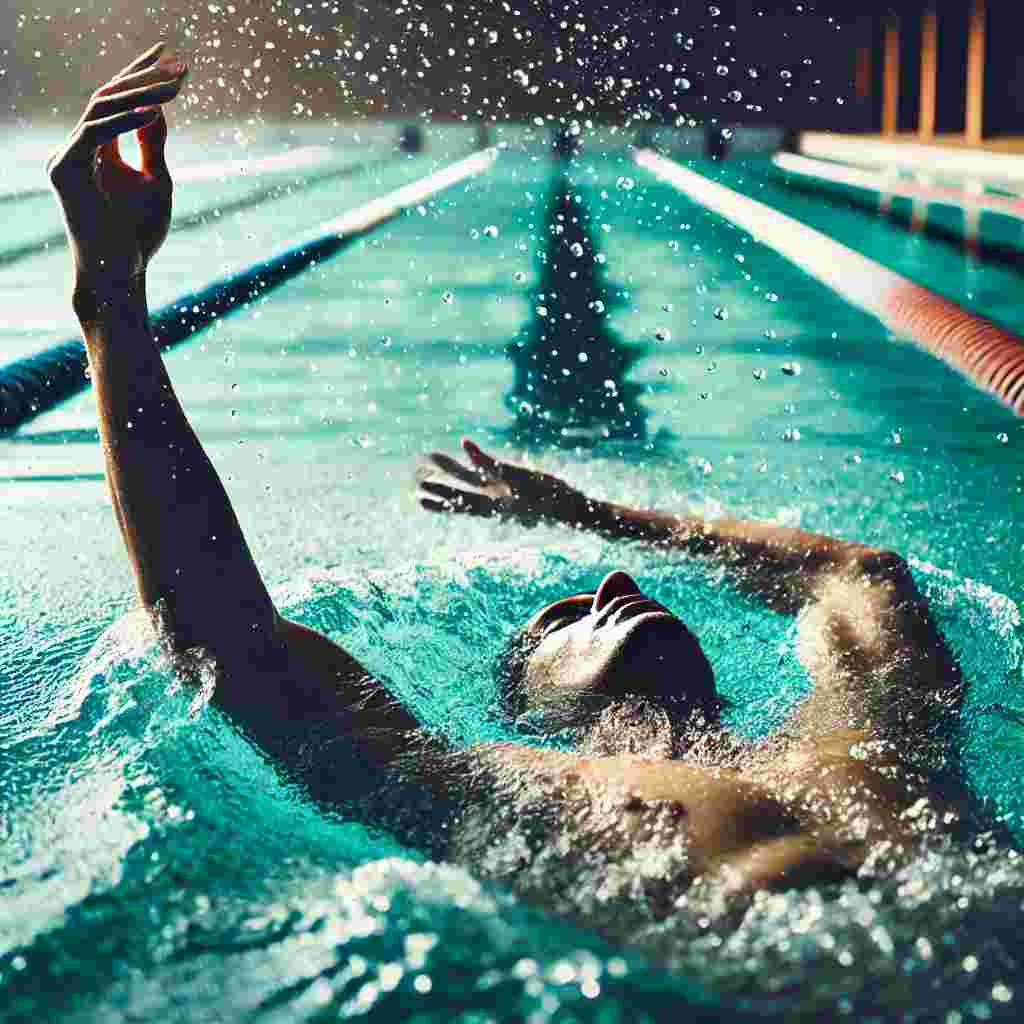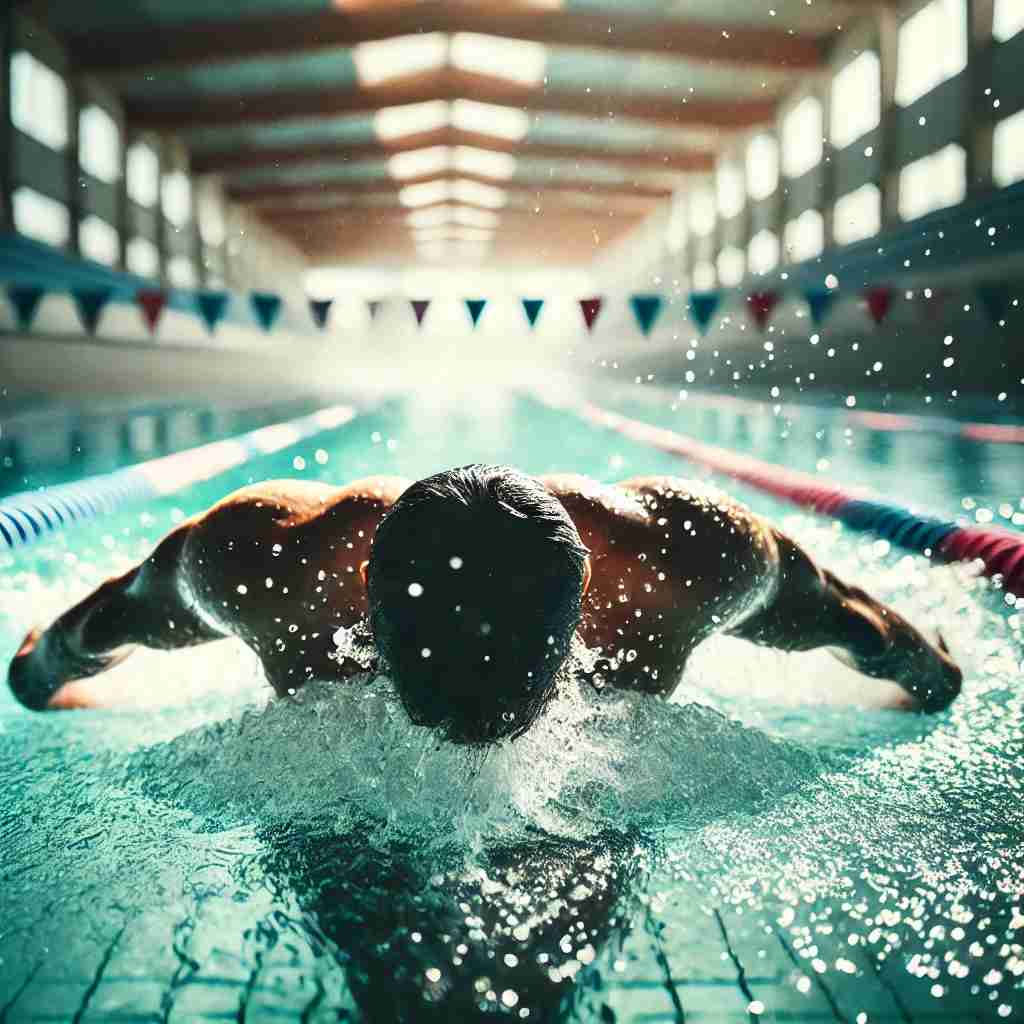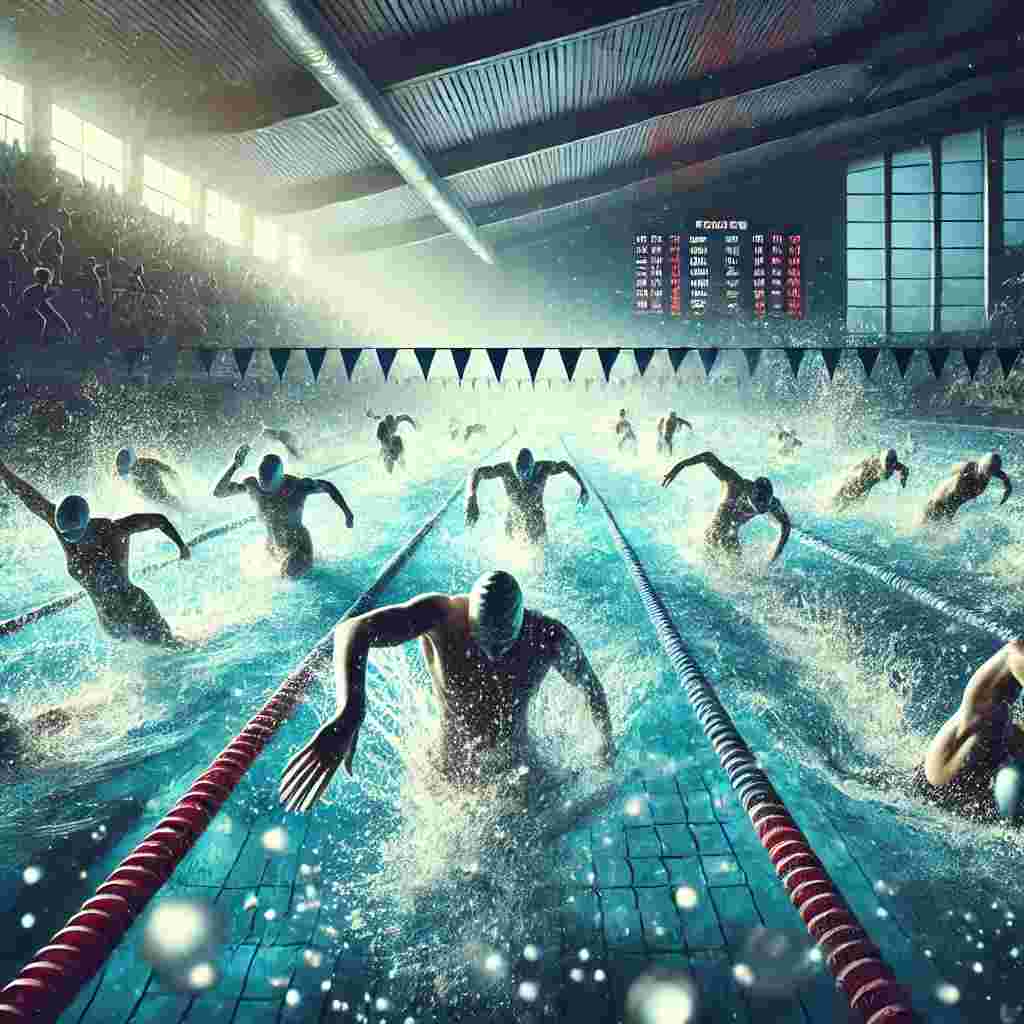Competitive swimming is a highly organized sport where individuals or teams race against each other in pools or open water. It has a rich history, dating back to the early 19th century, and has become a significant part of the modern Olympic Games.
The sport emphasizes speed, technique, and endurance, making it both a thrilling spectator sport and a rigorous physical activity.
Types of Competitive Swimming
Competitive swimming comprises various events, including:
- Sprints: Short, high-intensity races typically ranging from 50 to 100 meters.
- Distance Races: Longer races, often 800 meters and above, requiring endurance.
- Mid Distance Races: A mix of sprint and distance, requiring both endurance and speed. These range from 200 to 400 meters.
- Medleys: Races where swimmers use all four strokes (butterfly, backstroke, breaststroke, and freestyle) in a single event.
- Relays: Team events where each swimmer completes a segment of the race using a designated stroke.
There are Four Main Strokes of Swimming
Freestyle
Freestyle, often synonymous with the front crawl, is known for its speed and efficiency. Swimmers alternate their arms in a windmill motion while flutter kicking. It is commonly used in most short, mid and long-distance races due to its quick pace and minimal resistance.

Backstroke
Backstroke involves swimming on the back with an alternating arm stroke and a flutter kick. It provides a unique advantage as it allows swimmers to breathe continuously. Key techniques include a strong start and maintaining a streamlined body position to reduce drag.

Breaststroke
Breaststroke is characterized by a frog-like kick and simultaneous arm movement. It is often considered the most technically challenging stroke due to its precise timing requirements. Competitive applications include both sprints and mid distance races, as it demands a blend of power and precision.

Butterfly
The butterfly stroke is one of the most physically demanding, featuring a simultaneous arm movement combined with a dolphin kick. This stroke requires substantial upper body strength and coordination, making it common in races that emphasize power and technique, typically over shorter and mid distances.

How Do I Get Better At Competitive Swimming
Getting better at competitive swimming is all about dedication and smart training.
First, focus on perfecting your technique. Work with a coach to refine your strokes, turns, and starts. Consistent practice is key, so make sure you’re hitting the pool regularly.
Mix up your workouts with a combination of endurance, speed, and strength training. Don’t forget dryland exercises to build overall strength and flexibility.
Pay attention to your diet, staying hydrated, and getting enough rest. These factors are crucial for recovery and performance. Set specific goals for each session and track your progress to stay motivated.
Lastly, remember that mental preparation is just as important as physical training. Visualization techniques and staying positive can boost your confidence and performance in races. Keep pushing yourself, stay patient, and you’ll see improvement in no time!
Related: How to do better at Competitive Swimming
How Do You Become a Competitive Swimmer
Becoming a competitive swimmer involves dedication, consistent training, and mastering various techniques. Joining a swim club, participating in regular training sessions, and competing in local meets are essential steps.
Best Techniques and Training for Competitive Swimming
Starts and Turns
Mastering starts and turns can significantly impact race outcomes. Effective techniques include explosive starts from the blocks, streamlined underwater kicks, and quick, efficient flip turns.
Stroke Refinement
Improving stroke technique involves focusing on efficiency and speed. This includes maintaining a streamlined body position, optimizing breathing patterns, and refining arm and leg movements for each stroke.
Endurance Training
Building stamina is crucial for distance events. Endurance training routines might include long swims, interval training, and incorporating dryland exercises to enhance overall strength and cardiovascular fitness.
Related: How to train Like a Competitive Swimmer
Competitive Swimming Pool Specifications
When it comes to competitive swimming, having the right pool specifications is key to fair and exciting races. Our competitive swimming pool meets all the top standards to ensure every swimmer gets the best experience.

We maintain the water temperature between 25-28°C to keep it comfortable for all athletes. Lane markers and anti-wave lane ropes help reduce turbulence, giving swimmers a smooth, uninterrupted swim.
Our pool is designed to help you perform your best and enjoy every second in the water!
How Long Is a Pool for Competitive Swimming?
Standard competitive swimming pools are 50 meters long for long course events and 25 meters for short course events.
Competitive Swimming Pool Distance
Common competitive distances include 50m, 100m, 200m, 400m, 800m, and 1500m races. The choice of distance often depends on the swimmer’s specialty and event type.
Frequency of Training
Competitive swimmers typically train multiple times a week, often daily, to build and maintain their fitness and technique. Sessions can include both water and dryland training.
Mental and Physical Preparation for Competitive Swimming
Mental Toughness
Developing mental resilience is crucial. Strategies include visualization, setting realistic goals, and maintaining a positive mindset even during challenging training sessions or competitions.
Training Regimen
A balanced training regimen includes swim practice, dryland exercises, and mental conditioning. Swimmers might follow a schedule that incorporates aerobic and anaerobic workouts, strength training, and flexibility exercises.
Recovery and Nutrition
Proper nutrition and recovery are vital for peak performance. A balanced diet rich in protein, carbohydrates, and healthy fats, along with adequate hydration, supports muscle recovery and energy levels. Techniques like stretching, massage, and adequate sleep help in the recovery process.
Related: Is it hard to be a competitive Swimmer
Competitive Swimming Events
Different Types of Competitive Swimming Events
Competitive swimming events range from
- sprints,
- mid distance,
- distance races and
- medleys.
Each event type requires specific techniques and strategies tailored to the swimmer’s strengths.
Famous Competitions
Key competitions like the Olympics, World Championships, and regional meets are the pinnacle of competitive swimming. These events showcase the world’s best talent and serve as benchmarks for aspiring swimmers.
Equipment and Gear for Competitive Swimming
Essential Gear
Competitive swimmers require gear such as performance swimsuits, goggles, and caps. These items are designed to reduce drag and enhance performance.
Advanced Training Tools
Training tools like fins, paddles, and kickboards are used to improve strength, technique, and endurance. These tools help swimmers focus on specific aspects of their strokes and overall performance.
Health and Safety Tips for Competitive Swimming
Preventing Injuries
Common swimming injuries include shoulder strain and knee pain. Preventing these injuries involves proper technique, adequate warm-up routines, and incorporating strength and flexibility exercises into training.
Health Benefits
Swimming offers numerous physical and mental health benefits, including improved cardiovascular health, muscle strength, flexibility, and stress reduction. The low-impact nature of the sport also makes it suitable for all ages and fitness levels.
Related: Lifeguard Training & Certification
Success Stories and Inspirational Figures
Profiles of Top Swimmers
Highlighting the journeys of top swimmers like Michael Phelps, Katie Ledecky, and Caeleb Dressel can provide inspiration and insights into the dedication required to excel in the sport.
Inspirational Quotes and Anecdotes
Motivational quotes and stories from successful swimmers can inspire readers to pursue their swimming goals with determination and passion.
Summary of Key Points
Competitive swimming is a dynamic and demanding sport that offers numerous benefits and challenges. From mastering the four main strokes to developing mental toughness and maintaining proper nutrition, every aspect contributes to a swimmer’s success.
Whether you are an aspiring swimmer or an enthusiast, understanding the nuances of competitive swimming can enhance your appreciation and performance in this exciting sport.
Bonus Resource: Nutrition Tips for Swimmers to boost performance
Looking to take your competitive swimming skills to the next level?
Welcome to Rocket Swim, where we offer elite competitive swimming training right here in Toronto. Imagine yourself gliding through the water with the perfect stroke, leaving your competition in the wake. Our expert Swimming coaches in Toronto are dedicated to helping you achieve your swimming goals, whether you aim to dominate local meets or dream of Olympic glory.
Don’t wait to make your swimming dreams a reality. Join Rocket Swim today and dive into the best competitive swimming training Toronto has to offer.
Contact us now to book your free consultation and start your journey to greatness!
The Wait is Over

